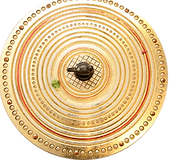
Eternal Gandhi
DISMANTLE ALL BOUNDARIES
National Gallery of Modern Art, Mumbai, 2006

Eternal Gandhi
National Gallery of Modern Art, Mumbai, 2006
Eternal Gandhi
DISMANTLE ALL BOUNDARIES

Winner
ID Magazine Design Award,
New York
2002
Eternal Gandhi

Winner
ID Magazine Design Award,
New York
2002

.png)

_edited%20(weco.png)


Creative Spirituality, Technology, Culture & Design



.png)
.png)



.png)


.png)
The World of
RANJIT MAKKUNI










Eternal Gandhi
.jpg)
In 2002-2004, the Eternal Gandhi Multimedia Museum took shape as one of the world’s first digital multimedia
museums. Physically located at Gandhi Smriti, the site where Mahatma Gandhi attained martyrdom, it not only preserves the historical events of Gandhiji’s life, but presents a spectrum
of information technology visions inspired by Gandhian thought.

Winner
ID Magazine Design Award,
New York
2002

Research Vision

.jpg)
The project presents a language of physical interface actions derived from classical symbols of the spinning wheel, turning of the prayer wheels, touching symbolic pillars, the act of hands touching sacred objects, collaboratively constructed quilts, sacred chanting in the collective group, the satsanga, and the touching and rotating of prayer beads.
These tradition based interactions inspire a rich panorama of tactile interfaces that allow people to access the multimedia imagery and multidimensional mind of Gandhiji. The technology developed does not ‘merely scan’ Gandhian images. It extrapolates Gandhian ideals to newer domains of product design and, at higher levels, the creation of meaning in a globalized world. For example, the Gandhian commitment to hand-based production and its symbiotic relationship with nature is interpreted in the context of
modern culture-conscious design. Here lies the reaffirmation of the Gandhian view, a commitment to the dignity of labour, the bridging of divides, and the leveraging of village creativity and cultural diversity in the face of homogenization.




.jpg)
Hon. Primeminister of India, Shri. Manmohan SIngh opens the museum, while Smt Rajashreeji feels elated at the creation of such a tremedous, historically first achievement.
Installations

Truth Pillar-- The 11 principles that characterise a Satygrahi, the one firmly established in 'Truth."



.jpg)

Gandhi's rediscovery that India is a network of interconnected villages during a train journey across India.
Rediscovery of India as a series of interconnected villages. Gandhiji’s rediscovery of India. After his arrival from South Africa, he embarked on a journey throughout the land of his birth.

Ashram, the laboratory of Truth

Interactive Ashram.


Vaishnavo Janato--
Gandhi's prayer and its many dimensions.

Concentric circles of development.
The charkha was not merely a political symbol but also a symbol of liberation. It points a way forward from the current predicament of globalized economies that large parts of the world fall under, where people can ‘physically’ become engaged to create the products of their consumption and, in turn, support local knowledge, local manufacturing, strengthen communities and local economies.

Truth Pillar-- The 11 principles that characterise a Satygrahhi, the one firmly established in 'Truth."
Capturing the 11 vows of the Man of Truth, the Satyagrahi, the pillar is divided into 11 spin-able, rotatable disks, which spin around the axis. Spinning the disk, akin to turning the prayer wheel, allows people to trigger the playback of a video interpretation of the Satyagrahi’s vow, which forms the basis of Gandhiji’s vision of a Man of Truth.
Credits
press
The Eternal Gandhi museum presented over 50 exhibits, each showing Gandhian messages and corresponding humanized interaction, ranging from the time line browser of Gandhi, to sacred pillars that explore the concept of satya, interactive ashrams which apply the philosophy of satya in spiritual practice, to interactive salt urns and charkhas showing the application of satya in the freedom struggle and ultimately an installation where the technology disappears entirely, so that people can hold each others’ hands to affirm the dismantling of class and social injustice.

Time Line Browser, of Gandhi's life. Each date on the mural allows the visitor to fetch records of Gandhi for that date.
Groups of children collaboratively allow collective spinning of Gandhiji’s powerful symbol, the spinning wheel.



The political, economic and spiritual dimensions of Charkha, the spinning wheel.

Salt March.
Children’s animations play back in a kaleidoscope.

Kaleidoscope showing children's sketches on Gandhi.

All religions are One.
In conclusion, the Unity Pillar installation continues exploration into collaborative interfaces. It requires people to hold hands to light up a pillar symbolizing the destruction of caste prejudices and social in justice. Here the computer has totally disappeared and people themselves have become the interface, touching each other, touching loving, human hands, not objects, and dissolving the skins of their otherwise separate bodies into a single, unified collaborative body.
Kaleidoscope showing children's sketches on Gandhi.

Gandhi's breath interface.
Misty Interface in which people access Gandhian messages by blowing on a display created by mist. This installation shows the harmonious meeting of two mythologies: This installation allows people to blow on a misty surface which communicates Gandhian messages. Through breath, people scroll though Gandhian messages presented as a projection on the mist. The concept of breath comes from yogic health traditions and this installation brings a technique from one world view into another world view, i.e., an information retrieval space. This installation shows an example of a design that allows people to experience well-being (through breath control) while information browsing. Adding yet another layer to the bridges between the worlds of village art and technology is the design of a shell created in village materials i.e., bamboo.

Winner
ID Magazine Design Award,
New York
2002
.jpg)

Winner
ID Magazine Design Award,
New York
2002
.jpg)

Physical, voice search
A lexicon of Gandhian terms are recognized as visitor’s search requests and videos matching topics in the search are played back on an adjacent screen, thereby making this installation function as a physical ‘search’ tool.
E Train.
.jpg)

Interactive prayer Wheels

Opening by India's Prime Minister, Manmohan Singh ji and the Birla family.


Unity Quilt.


Village computing and design.

Electronic Media






.jpg)

International Press
Electronic Media
NDTV, leading Indian TV features the Eternal Gandhi Museum.
Regional Media
.jpg)
.jpg)


CREDITS
(c) 2002-present, Sacred world Researh/ Design lab.







